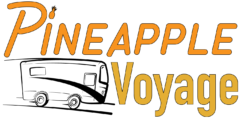
In the RV world, you hear the word boondocking a good bit. You may be asking yourself, “What exactly is boondocking?” Boondocking is spending the night in a spot with no electricity or water. It’s a great alternative to booking a campground spot just to briefly get a good night’s sleep while traveling.
Where Can I Boondock?
Parking Lots
There are several businesses that will allow you to boondockin their parking lots for free. Some ofthese are: Cabela’s, Wal-Mart (also known as “Wallydocking”, CrackerBarrel, Camping World, Flying J Truck Stops, fraternal lodges, etc.
Even though these places will allow you to park for free,there are some items of etiquette that make the experience more pleasant foreveryone involved.
– Always ask themanager for permission first. Whether you park or not will be at the discretionof the on-duty manager.
– Only stay for onenight. This is not a campground. Don’t show up and expect to stay for a week.
– It’s always bestnot to pull out your slides. If your trailer is like our current rig, we can’taccess the bathroom without pulling our slide out. We always try to find aparking spot, where pulling our slide out does not interfere with the flow oftraffic in the parking lot.
– Don’t bring outyour rug, outdoor chairs, and grill. Remember, you’re just there for a night.
– If you have a traveltrailer or 5th wheel, do not unhook you trailer or put your stabilizer jacksdown.
– Try and leave as early as possible. The business has done you a favor by letting you spend the night there. Do them a favor by getting out of their parking lot at a decent time so that you are not taking spots from their paying customers.
Private Land
Harvest Host is a group of farms, vineyards, and museumsthat allow you to park on their land for free. The service has a $45 yearlyfee. If you stay at one of these facilities, you are expected to patronize thebusiness. Buy some wine, some fresh fruits or veggies, visit their museum, etc.
Boondockers Welcome is comprised of individual landownerswho have room for people to park for a night or two. The yearly cost is $30 forone year or $75 for three years. Some of these spots may have water or may haveelectricity, but it’s best to go in not expecting anything and to be pleasantlysurprised.
Public Land
Bureau of Land Management (BLM) Land
Bureau of Land Management land is just as it sounds. The BLMis federal land and part of the U.S. Department of the Interior. BLM land isway more common in the mid-West to West that it is in the East. In most cases,these lands can be used for free.
What Equipment Do I Need?
Most campers can boondock with their standard equipment.Depending on the location and season, determines your comfort of boondocking. If you’re in the south duringthe summertime, it can be hot at night with standard equipment. There are somestandards and optional equipment that can make your life a little easier duringboondocking.
– A freshwater tankwith pump – Most RVs come with a freshwater tank and pump, but beforeboondocking it is important to make sure they are clean and in workingcondition. Freshwater in a tank will allow you to make able to have water,flush the toilet, etc.
– Solar – Solarpanels with a battery bank would be extremely helpful in being able to usephone chargers and small appliances. While solar is expensive to install, theoperating cost is very, very little.
– Generator – Agenerator is great for being able to run electronics while boondocking. Agenerator has a smaller upfront cost than solar but does require fuel to run.


